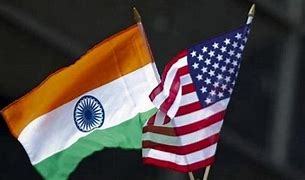Declassification of US Strategy for Indo-Pacific
Declassified Indo-Pacific strategy recommends US to strategize for accelerating India's rise and blocking China from establishing illiberal spheres of influence in the region.

Declassified Indo-Pacific strategy recommends US to strategize for accelerating India's rise and blocking China from establishing illiberal spheres of influence in the region.

The Trump administration has declassified on Wednesday, a Report which laid down the Indo-Pacific Strategy. This report was signed by President Donald Trump’s former National Security Adviser, HR McMaster in 2018 which clearly advised to align US’s Indo-Pacific strategy with those of Australia, India and Japan. The declassified report released on Wednesday is 30 years earlier than usual.
According to news portal Axios, it lays out the strategy for “accelerating India’s rise”, blocking China from establishing “illiberal spheres of influence”, and maintaining “US strategic primacy” in the region.
The ten page report written in 2018, guided U.S. approach to China, India, North Korea and other nations in the Indo-Pacific for the past three years.
The strategy emphasises countering China’s growing influence by strategic alignment with allies and partners, upholding a “liberal economic order” in the region, to counter intelligence activities.
It outlines major expansion of military, intelligence and diplomatic support to India as a counterweight to China.
The important highlights of the document is as follows: –
India and US, have built closer ties in the last two decades, under the leadership of former presidents Bill Clinton to George W Bush to Barack Obama and up to the Donald Trump administration. But it was only during the current dispensation, the focus has increasingly been on the Indo-Pacific region backed both by New Delhi and Washington.
It is noteworthy that India forms a cornerstone of the Indo-Pacific strategy for the US. The US-India strategic relationship highlights is mentioned below: –
Notably, the US traditionally had a One-China policy since 1979, when it established diplomatic relationship with the communist country. The Trump administration changed this outlook due to the increasing muscle flexing by China in the global arena by nursing an ambition to dislodge US dominance as the world’s greatest military and economic power. It started viewing and supporting Taiwan as a beacon of democracy and plans to defend Taiwan if China attacks Taiwan as Taiwan’s semiconductor industry would go into China’s hands if it were to occupy Taiwan. This document also recommends US to deny China air and sea dominance in the South China Sea.
The Trump administration ushered in a new official framework for viewing China and India as part of the same strategic region, beginning with its National Security Strategy in 2017. The US Pacific Command was renamed the Indo-Pacific Command in 2018 as a response to China’s rise.
Rushi Doshi, director of the Brookings China Strategy Initiative, says that the “unique feature of the memo is its focus on how the CCP’s worldview shapes its behaviour, which has been rare in US government documents and should be part of US policy debates”. Doshi also said that the paper does not focus much on key topic of economics and technology which are at the center on US-China competition.
While this document was approved in February 2018, the support on intelligence-sharing in China stands out amid the dispute at the Line of Actual Control (LAC) between India-China.
This document highlights the American recognition of developing stronger ties with India with focus on deeper security, intelligence and economic co-operation with India to reign in a China which is trying to play an international bully. Notably, it is hoped that China would have learnt its lesson in 2020 when India strongly countered China’s attempt to change the status quo in the border area in Ladakh. The more China tries to intimidate India and Japan, attempts to illegally occupy India’s territory and impose their hegemony in the South China Sea area and beyond, it will result in greater strategic co-operation of India, US, Australia and Japan to counter the menace of the neo-colonialist China.
Source of this article is drawn from: –
2. Newly declassified report lays out U.S. strategy in Asia – Axios
DISCLAIMER: The author is solely responsible for the views expressed in this article. The author carries the responsibility for citing and/or licensing of images utilized within the text.
